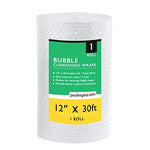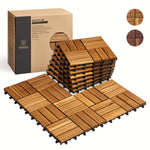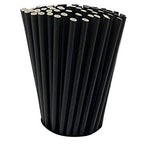You have no items in your shopping cart.
In our pursuit of a more sustainable and environmentally-friendly lifestyle, every choice we make counts. From reducing our carbon footprint to minimizing waste, small decisions can have a significant impact. One such choice is opting for biodegradable toilet paper, which offers a sustainable alternative to traditional options. In this article, we will explore the benefits of biodegradable toilet paper, its environmental impact, and how it contributes to a greener future.
Table of Contents
- The Importance of Sustainable Choices
- What is Biodegradable Toilet Paper?
- The Environmental Impact of Traditional Toilet Paper
- Advantages of Biodegradable Toilet Paper
- How is Biodegradable Toilet Paper Made?
- Biodegradable Toilet Paper vs. Recycled Toilet Paper
- Addressing Concerns: Is Biodegradable Toilet Paper Effective?
- Disposing of Biodegradable Toilet Paper: Best Practices
- The Future of Biodegradable Toilet Paper
- Frequently Asked Questions (FAQs) 10.1 What is biodegradable toilet paper? 10.2 Is biodegradable toilet paper safe for septic systems? 10.3 Can biodegradable toilet paper be used for other purposes? 10.4 Does biodegradable toilet paper degrade in water? 10.5 Is biodegradable toilet paper more expensive than regular toilet paper? 10.6 Where can I buy biodegradable toilet paper?
- Conclusion
The Importance of Sustainable Choices Living sustainably is crucial for the future of our planet. By making conscious choices that minimize harm to the environment, we can contribute to a healthier and greener world. One such choice involves selecting eco-friendly alternatives for everyday products, including toilet paper.
What is Biodegradable Toilet Paper? Biodegradable toilet paper is a type of tissue made from materials that can naturally break down and decompose over time. Unlike traditional toilet paper, which can take years to degrade, biodegradable options are designed to minimize their environmental impact.
The Environmental Impact of Traditional Toilet Paper Traditional toilet paper is typically made from virgin wood pulp, which involves cutting down trees. The manufacturing process also requires significant amounts of water, energy, and chemicals. Additionally, the bleaching process can release harmful substances into the environment.
Advantages of Biodegradable Toilet Paper
- Reduced environmental impact: Biodegradable toilet paper is made from renewable resources such as bamboo, recycled paper, or plant-based materials. These alternatives help conserve forests and reduce the carbon footprint associated with traditional toilet paper production.
- Rapid decomposition: Biodegradable toilet paper breaks down naturally, reducing the strain on landfills and wastewater treatment systems.
- Chemical-free: Many biodegradable toilet papers are free from chlorine, dyes, and other harmful chemicals, making them safer for both human health and the environment.
How is Biodegradable Toilet Paper Made? Biodegradable toilet paper is crafted using a variety of sustainable materials, such as bamboo, hemp, or recycled paper. These materials are pulped, processed, and transformed into thin sheets. Some brands also use eco-friendly packaging to further minimize their environmental impact.
Biodegradable Toilet Paper vs. Recycled Toilet Paper While both biodegradable and recycled toilet papers offer eco-friendly options, they differ in their production processes. Recycled toilet paper is made from post-consumer waste paper, while biodegradable toilet paper uses sustainable materials. Each option has its merits, and choosing between them depends on personal preferences and values.
Addressing Concerns: Is Biodegradable Toilet Paper Effective? Biodegradable toilet paper performs just as effectively as traditional options. Its strength, softness, and absorbency are comparable to regular toilet paper. Brands that prioritize quality and performance ensure that consumers can make the sustainable choice without compromising comfort.
Disposing of Biodegradable Toilet Paper: Best Practices To dispose of biodegradable toilet paper properly, it is important to follow a few guidelines:
- Avoid flushing large quantities: Although biodegradable, excessive amounts of toilet paper can still clog plumbing systems. Dispose of larger quantities in waste bins.
- Check local regulations: Some regions have specific guidelines for disposing of biodegradable waste. Familiarize yourself with local regulations to ensure proper disposal.
- Composting: If you have access to composting facilities, consider composting biodegradable toilet paper. Properly composted, it can contribute to nutrient-rich soil.
The Future of Biodegradable Toilet Paper As the world becomes increasingly conscious of environmental issues, the demand for biodegradable products continues to grow. The development and innovation in biodegradable toilet paper technologies will likely lead to even more sustainable options in the future.
Frequently Asked Questions (FAQs) 10.1 What is biodegradable toilet paper? Biodegradable toilet paper is a type of tissue that breaks down naturally and decomposes over time. It is made from sustainable materials and offers an environmentally-friendly alternative to traditional toilet paper.
10.2 Is biodegradable toilet paper safe for septic systems? Yes, biodegradable toilet paper is safe for septic systems. It breaks down easily and does not cause clogs or blockages in plumbing or septic systems.
10.3 Can biodegradable toilet paper be used for other purposes? Yes, biodegradable toilet paper can be used for other purposes such as facial tissue or household cleaning tasks. However, it is important to ensure that the toilet paper is suitable for those specific applications.
10.4 Does biodegradable toilet paper degrade in water? Biodegradable toilet paper does degrade in water. It is designed to break down easily, minimizing its impact on the environment and wastewater treatment systems.
10.5 Is biodegradable toilet paper more expensive than regular toilet paper? The cost of biodegradable toilet paper varies depending on the brand and quality. While some options may be slightly more expensive than regular toilet paper, the price difference is often minimal and justifiable considering the environmental benefits.
10.6 Where can I buy biodegradable toilet paper? Biodegradable toilet paper can be found in many supermarkets, health food stores, and online retailers. Look for eco-friendly brands and check product labels to ensure they meet your sustainability criteria.
Conclusion Making sustainable choices in our daily lives is essential for a greener future. By opting for biodegradable toilet paper, we can reduce our impact on the environment, conserve resources, and contribute to a more sustainable world. Let's make conscious decisions that align with our values and strive for a brighter future—one sheet at a time.








